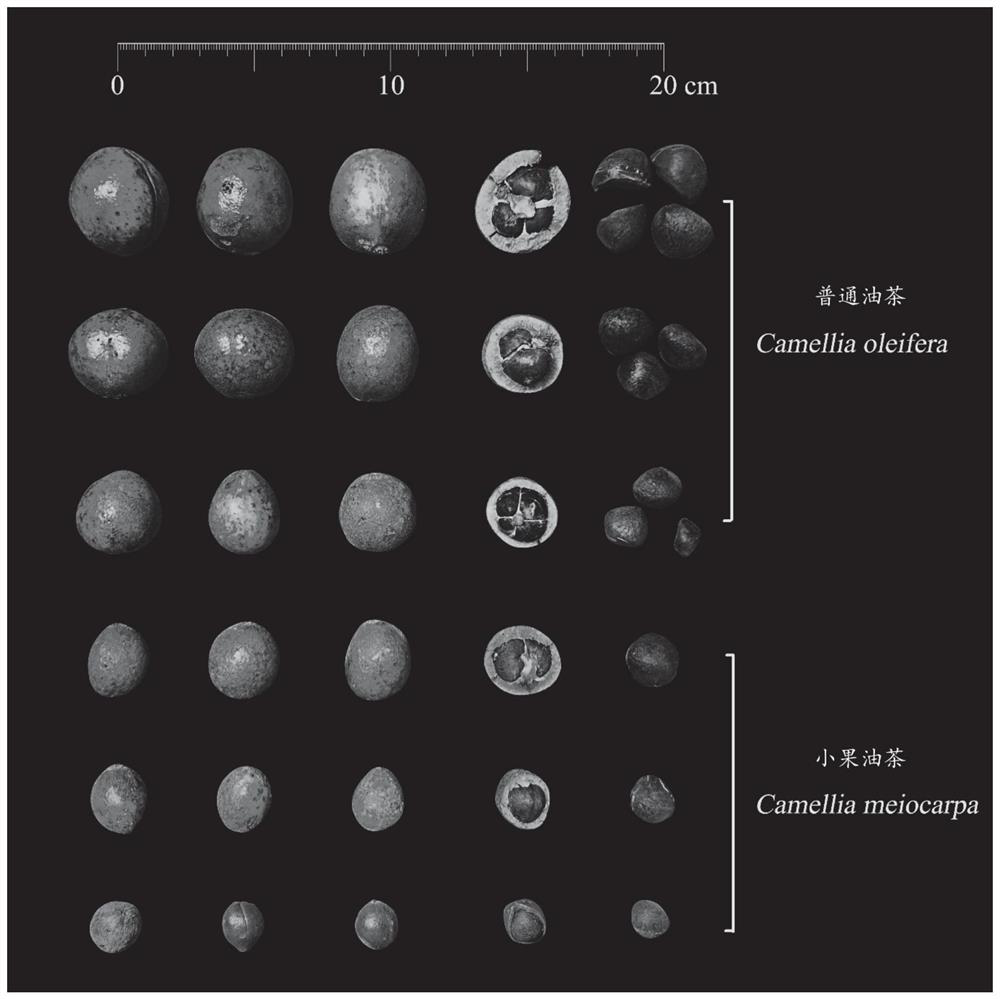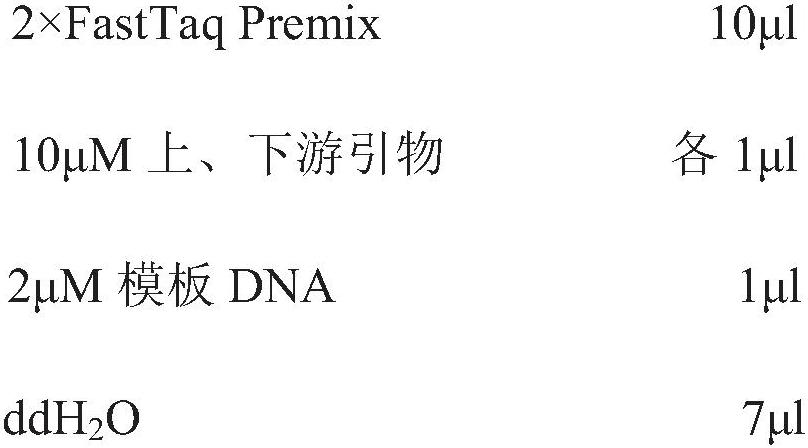Molecular marker primer and method for identifying common camellia oleifera and small-fruit camellia oleifera
A molecular marker, a technology for Camellia oleifera, which is applied in the field of molecular biology, can solve the problem that there is no chloroplast gene molecular marker, and achieves the effects of low cost and simple method.
- Summary
- Abstract
- Description
- Claims
- Application Information
AI Technical Summary
Problems solved by technology
Method used
Image
Examples
Embodiment 1
[0032] (1) Extract the genomic DNA of common Camellia oleifera and Camellia oleifera samples from different regions:
[0033] In this embodiment, common Camellia oleifera populations in 11 regions and Camellia oleifera populations in 6 regions were selected, and 3 individuals were randomly selected from each population as test samples, see Table 1 for details.
[0034] Take 0.02 g of dry leaves of the sample to be tested, add liquid nitrogen to grind thoroughly, and use a new plant genome DNA extraction kit (TIANGEN, Shanghai) to extract the whole genome DNA of the sample.
[0035] Integrity, purity and concentration were checked by 1.0% agarose gel electrophoresis and DNA / RNA UV spectrophotometer (NanoDrop 2000, Thermo, USA).
[0036] OD 260 / OD 280 For DNA samples >1.8, dilute to 2ng / μl for subsequent amplification. DNA extracts were stored in a -20°C refrigerator for later use.
[0037] Table 1: Information on the sampling sites of Camellia oleifera and Camellia oleifer...
PUM
 Login to View More
Login to View More Abstract
Description
Claims
Application Information
 Login to View More
Login to View More - R&D
- Intellectual Property
- Life Sciences
- Materials
- Tech Scout
- Unparalleled Data Quality
- Higher Quality Content
- 60% Fewer Hallucinations
Browse by: Latest US Patents, China's latest patents, Technical Efficacy Thesaurus, Application Domain, Technology Topic, Popular Technical Reports.
© 2025 PatSnap. All rights reserved.Legal|Privacy policy|Modern Slavery Act Transparency Statement|Sitemap|About US| Contact US: help@patsnap.com



